My favourite outdoors gear
And a few recommendations from my friends
After a summer with more time spent outdoors than ever before, I have extended my ‘gear hound’ habits into walking and camping kit. This is gonna be a long post, so I recommend reading online rather than in your email app, if you can! After Camp Wildfire last month my group chat has been full of recommendations for kit, so I thought I’d share them with you! It’s the perfect time of year to invest in new gear, with end-of-season sales popping up all over the place.

On My Feet
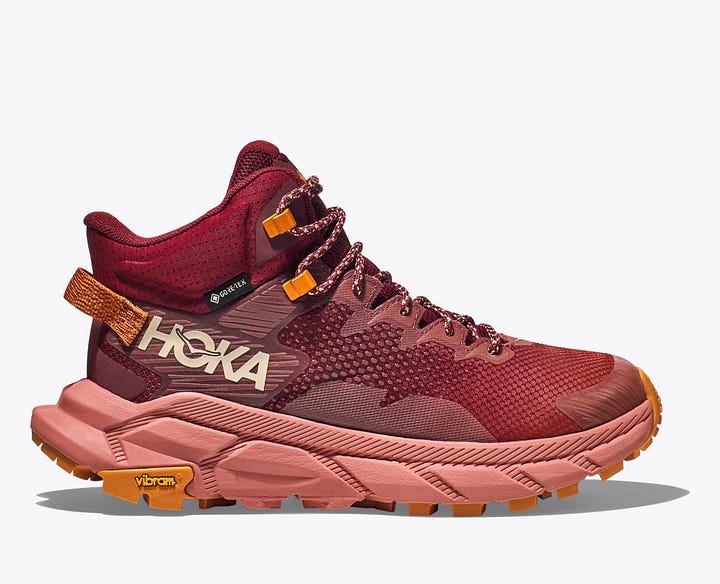

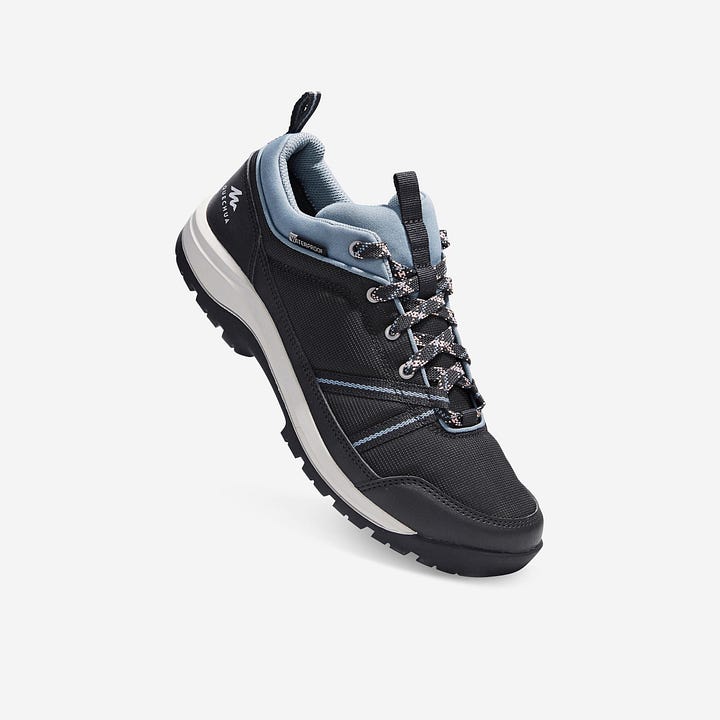
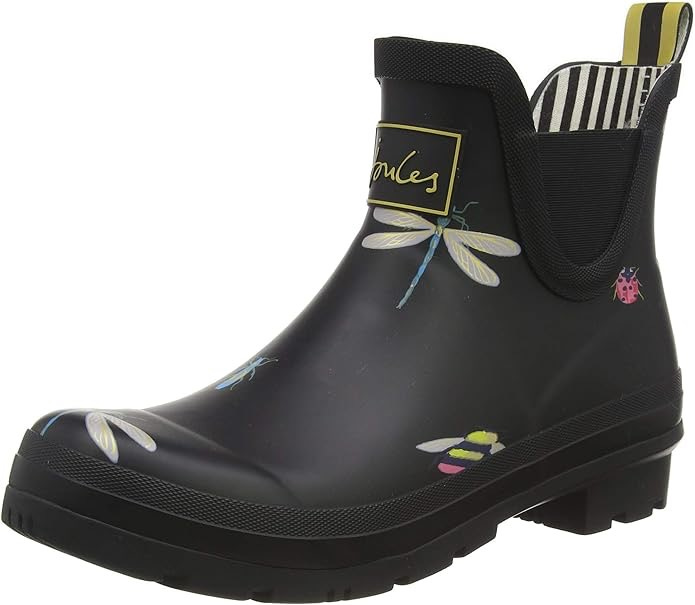
For long walks, I started off with a pair of Hoka Trail Code boots - I liked the fact that they were more like a running shoe with extra ankle support, rather than a full on ‘boot’. Unfortunately, they ended up not being quite the right shape for my feet (which are thin and flipper-shaped), and I’ve replaced them with a pair of Salomon X Ultra 4s in the same mid-height shape I like. A gold star here goes to the sales assistant at Cotswold Outdoor in Bath who spent a good 40 minutes helping me figure out exactly which boot would work out for my feet - we bounce back and forwards between the men’s and women’s (at a 7.5 in a street shoe and an 8.5 in a hiking boot I sized out of the women’s range they had in store). Both boots are waterproof up to the ankle, which is fantastic for deep mud and slop.
For mucking around outdoors, boots can feel like overkill - so at Camp Wildfire and for shorter day walks when there’s less mud, I have a pair of Decathlon’s entry-level walking shoes. Even in a full day of torrential rain, my feet stayed toasty and dry - they’re worth every penny of their £29.99 price and quite possibly their weight in gold. As a side note, a lot of Decathlon gear is available second-hand through their ‘Second Life’ initiative, which is worth keeping an eye on if you’re hankering after new-to-you kit.
When you’re getting up first thing to go to the loo, though, shoelaces aren’t ideal - and at that time the grass is often wet with dew even if it hasn’t rained. Wellibobs* (* ad - Amazon affiliate link) to the rescue! Lots of brands do ankle-height wellies; I’ve been really pleased with my Joules ones which are now coming up for ten years old.
Camping

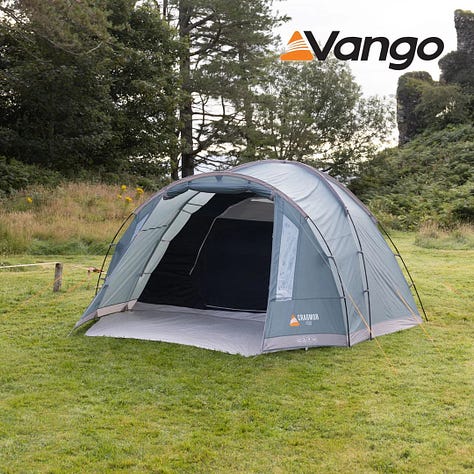
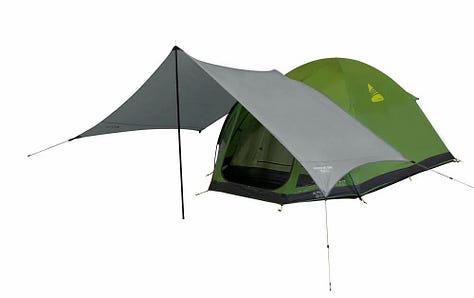
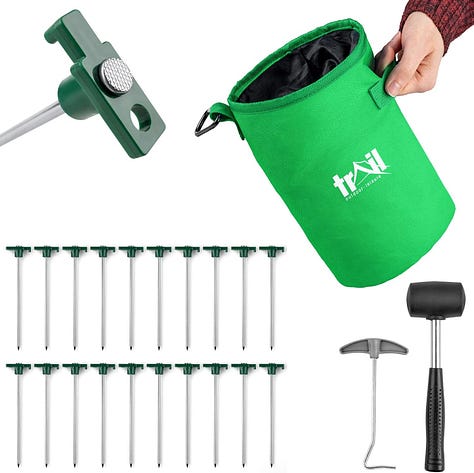


I’ve tried out various tents, and for camping alone in a situation where I’m not counting every gram of weight, I love my Forclaz 3-person trekking tent (mine - in the top picture of this post - is last year’s colour way which is lurid orange). It’s a doddle to put up and pack down again, with the sleeping inner already attached to the rain shell. It’s pretty small and light; if I were actually hiking with it, without a buddy to split the weight and share the space with, I’d consider switching to a smaller model from the same range. On this trip, because of the stony ground and the forecast rain, I put an extra groundsheet* under the sleeping inner - and I’m glad to say I stayed completely dry and cosy inside despite Storm Lilian’s best attempts to wash us out. The only disadvantage is that due to the sloping door and small porch, it’s impossible to get in and out without letting rain fall into the inner - I’ll be tarting it up with a tarp over the top next time I use it. That’s a trick I’ve borrowed from a friend who uses the Vango Cragmor 400 tent with the matching Adventure Tarp over the front.
What both of these tents have in common is that most of the structure holds itself up thanks to the dome created by criss-crossing the poles - the guy lines add extra stability but don’t actually hold the tent up. This makes them a lot easier to pitch and much more stable in a busy campsite where you can’t necessarily place all the guy lines in the optimum place/ people might trip over them. At Wildfire, the ground is incredibly hard, which makes this even more important. I use heavy-duty pegs* and a hard ground mallet and even then it’s still a tough job to get the tent secure to the ground.
An extra luxury ideal for carting things between the car and campsite is a folding trolley - I use mine constantly for groceries, picnics, and parties.
Sleeping
I’m still perfecting my sleep system, so this is a combination of my own recommendations and my friends’. Starting from the ground up, you need as many layers underneath you as you do over you to stay warm (the ground is colder than the air!).

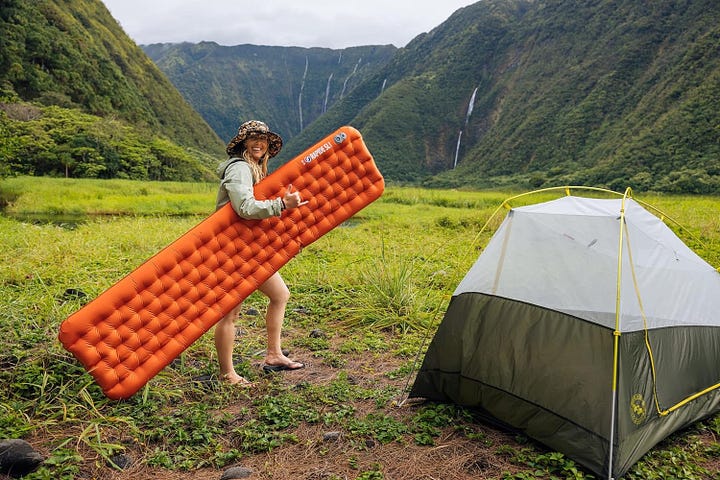
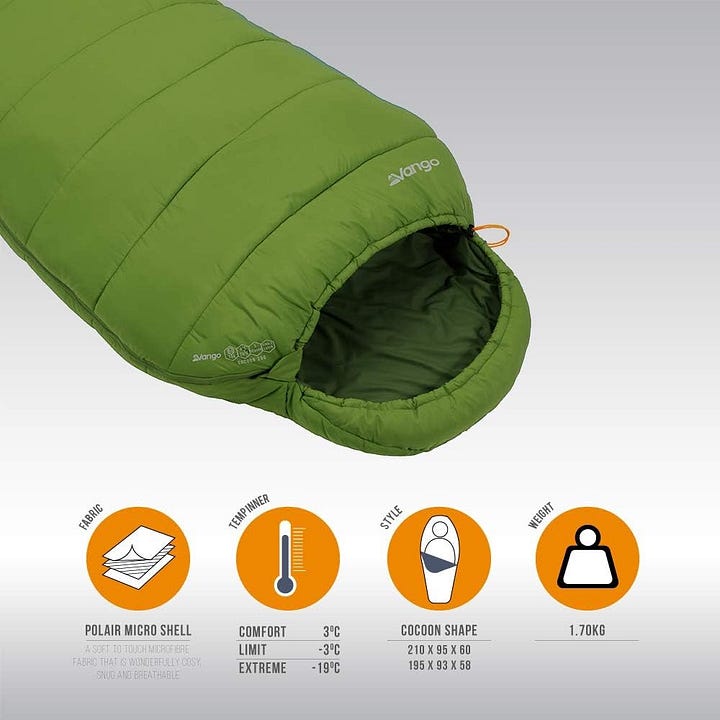
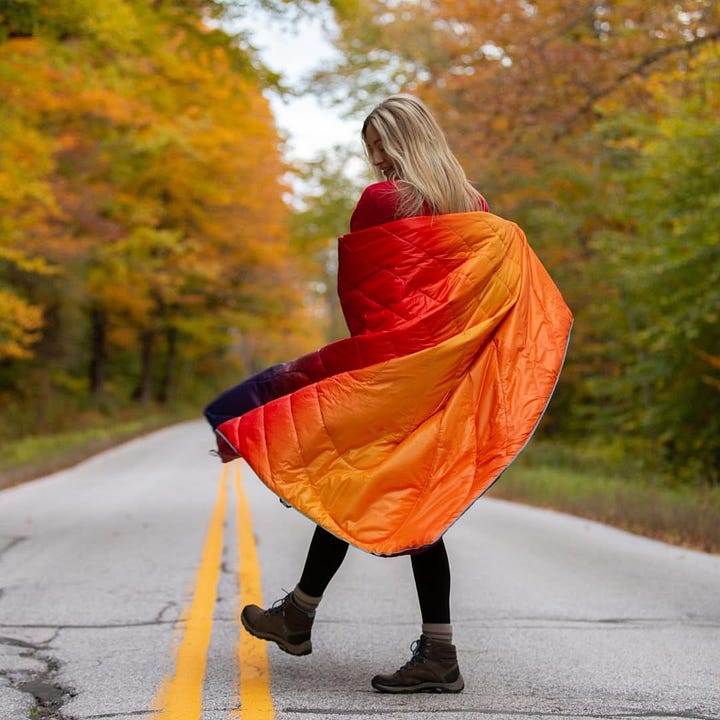
One of my group laid this shiny mat* underneath their sleeping kit and said they stayed noticeably warmer as a result. We were, however, pitched on a slope and they kept sliding down towards the foot end of their tent. Use with care! (I have seen this idea to fix the problem… but haven’t tried it). This folding mat* from Therm-a-rest has the same heat-reflective properties, plus some insulation and cushioning - worth noting though that it only has an R-value (a measure of insulation) of 2.0, so I wouldn’t personally use it by itself in autumn or spring.
For more cushioning, one of the group is a huge fan of her Big Agnes inflatable mat* - it has some thoughtful design details like thicker baffles at the edges to help prevent you from rolling off, and packs down to a tiny bag despite its R-value of 4.8. Plus it comes in multiple widths and lengths depending on your shape and size. If weight and size are no object, though, I adore my Outwell Dreamcatcher mat. It’s 12 cm thick and super warm (R-value of 7.5) and comfortable - I even use it as an air mattress for guests staying on my living room floor. It is, however, massive - packed up, it’s the same size as my tent, sleeping bag, and blanket combined…
I had a new sleeping bag for this year - the Vango Cocoon* which is an extra-wide mummy-shaped sleeping bag which still goes down into a reasonably sized stuffy bag. It was super comfortable, and being wide, there was more than enough fabric for when I inevitably unzipped it to use as a quilt. On top, for extra warmth, I had a Rumpl puffy blanket* which is essentially a thin puffer coat… made into a blanket. The one-person size is generously big (I actually have it over my knees now, as I’m sitting on my balcony to write this) and super cosy.
Eating
Two things you need to know to explain my camp cooking set-up: I’m a former Girl Guide, and I’m scared of gas stoves. As a result, I use a cute little Trangia Mini* stove with gel or solid* fuel and an electric lighter*. The whole kit packs into the cooking pans - but this year I left those at home and just took this 0.8 litre kettle* (and yes, the handle really does stay cool enough to grab with your hands!). That’s enough water for coffee and porridge, or two mugs of hot chocolate.
I will always take cake camping with me - I wrote about this last year:
Summer Camp Flapjacks
Pull Up A Chair is a weekly newsletter containing all the things I’d like to be chatting about if we could hang out together in real life. Every week, I start with three things I’ve enjoyed, and then write in more detail about something I’ve been thinking about.
I made the same chocolate cake again this year, and, as ever, it went down really well. Generally, cakes with yoghurt, ricotta, sour cream, or similar in tend to stay moist for longer - so they’re always my go-to when baking for travelling.
Waterproofs
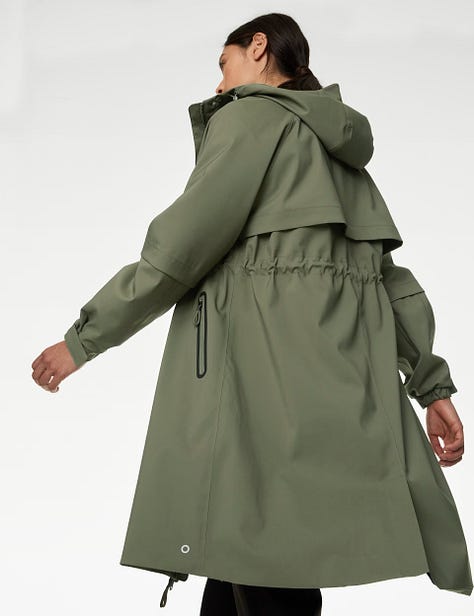
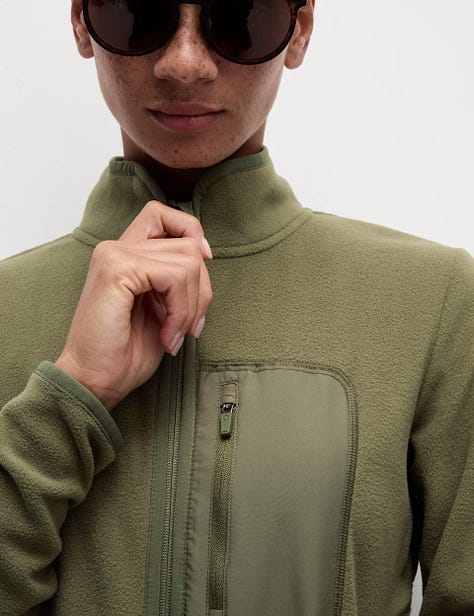
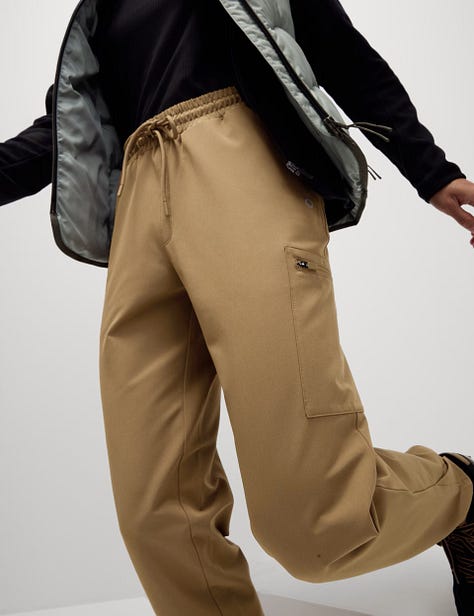
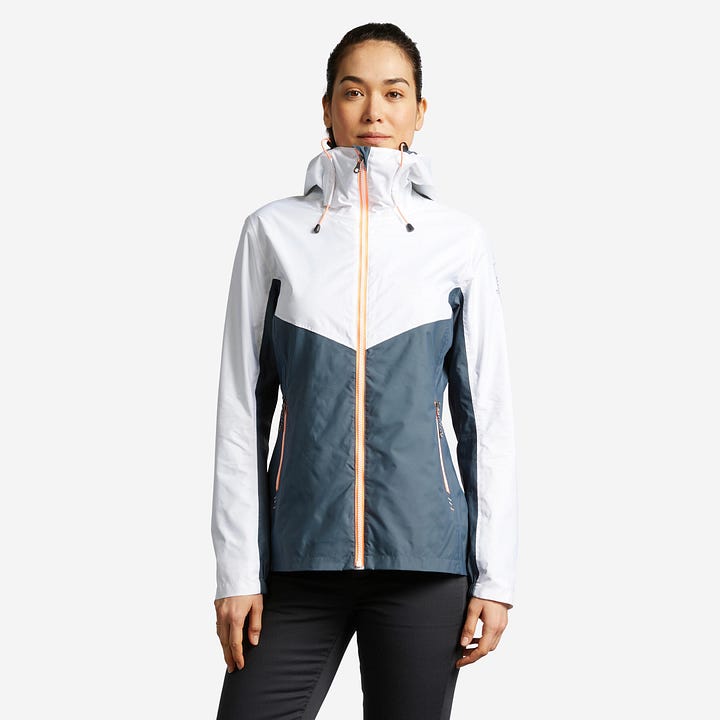

On impulse, I chucked my new long-length (it almost reaches my knees!) waterproof jacket on the top of my pack before I left, and I’m so glad I did. It rained for almost an entire day and this jacket kept me as dry and warm as I was going to be - with a fleece underneath and comfortable stretchy waterproof trousers over my leggings. Once the rain had (mostly) stopped for the day, I hung the jacket up to dry (thank goodness for the friends who brought a gazebo) and put on my lighter-weight waterproof (my best friend for day hikes without a rain forecast) and a thick cozy hoodie that’s short enough to stay under the jacket.
Extras
One of the worst bits of camping is having to get out of bed in the middle of the night to go for a wee. I have a two-part strategy to mitigate this. First, past about 8-9pm I stop drinking beer or cider, just topping up my warmth levels occasionally with cheap bourbon from a hip flask* (if you’re reading this, Camp Wildfire security… no you’re not). This year, I also invested in a Whizzer, for extra peace of mind. Luckily I didn’t need to use it, but I’ll certainly take it on future camping trips, just in case.
This year has been the year of upgrading my packs for travel, hiking, and camping. I am now the proud owner of three Gregory packs in different sizes: the Maya 20 for dayhikes and light weekend travel, the Amber 44 (this is what I took to Austria and back at the start of August), and the Amber 65 (which is what I packed for Camp Wildfire). I have all three in the ‘plus size’ version which means that the carry systems are designed slightly differently for bigger bodies; most importantly, for me, the hip pockets are further around the belt, so they’re really easy to reach even on wide-hipped people like myself. All three have ‘stuff-it’ pockets on the front which makes quick access to things like snacks, maps, and my Kindle super simple, and they’re incredibly comfortable to carry.
When I’m hiking, I always put the same few things on a keychain on the front of my pack):
An ICEtag with my name and emergency contact number on
A small multi-function ‘Swiss Army’ style pen knife
A small torch (similar)
A whistle
I’m not trying to prevent every possible eventuality - mostly I’m following marked trails in easy reach of towns - but it’s about peace of mind that I could attract attention and get help if I slipped off a path and hurt my ankle, or something like that. So far, I’ve only used the penknife to help cut off the ribbon tags in a family member’s outfit and to get into a bottle of wine when I couldn’t find my proper corkscrew - real emergencies, right?
Speak soon,
Lily
Missed Friday’s recommendations post?
Or August’s links roundup?



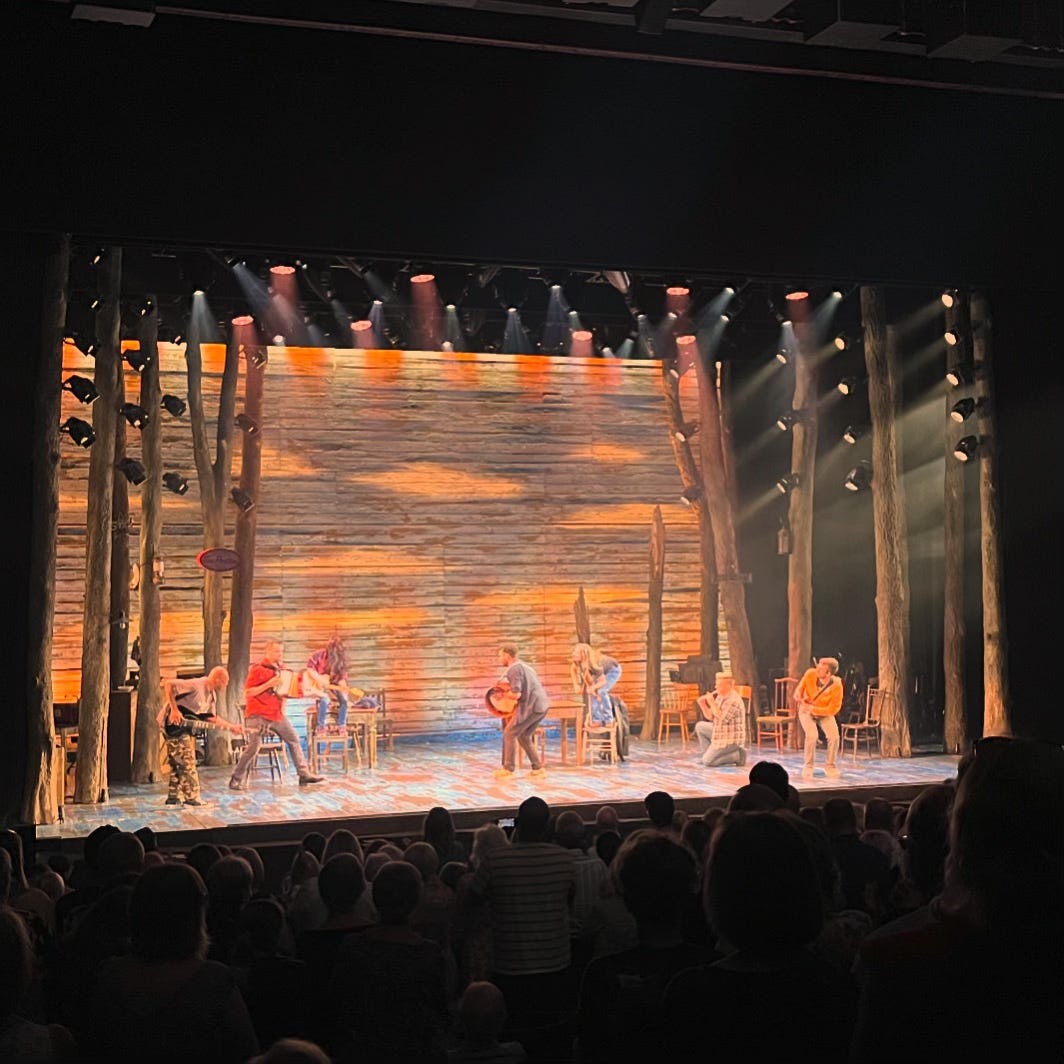

This was really helpful. I camped loads as a kid but my closest camping experiences as an adult were at Dalkeith in a prepitched tent and in my parents’ garden with Teddy. I think I’d class myself as a reluctant camper now, but mostly because of the rain / wet. This wasn’t a thing when we were camping im Truckee as a child. I hate a mummy sleeping bag though, i find them so claustrophobic as someone who tosses around a lot? My parents have their very old Coleman sleeping bags that zip together, and I think I’m going to nab them next time we are there. Teddy is in year 2 of beavers loves it so I suspect there will be more camping in my future.